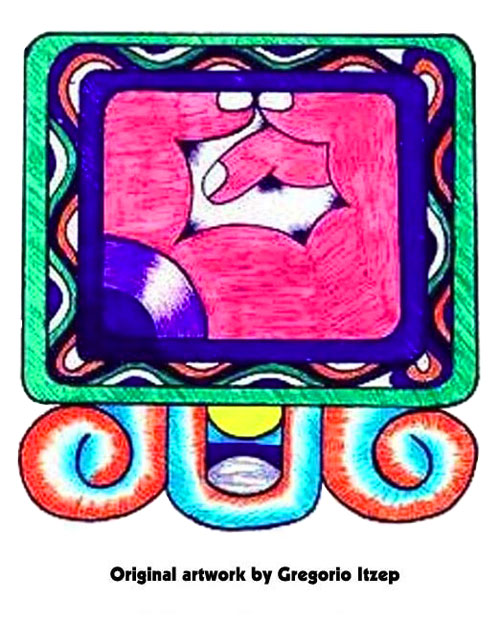
Manik Trecena
by Kenneth Johnson
In the collective imagination of the Maya, the deer is not perceived as a soft dappled fawn but as a mighty stag, the lord of the forest. The deer is one of the most powerful of all animals. When the conquistadors first arrived in the Mayan country, the natives thought that their horses were a close relative of the mighty deer, so they called it by the same name. I still remember my confusion when one of my K’iche’ friends pointed to a creature in a nearby field and called it a kej; I found myself looking at a horse rather than a deer.
In Mayan folklore, the god of hunting was named Ek Zip or Black Zip—he survives in childhood stories to this very day as an old man with a long white beard who keeps all the world’s animals in his magical corral, deep in the forest. Not only is Ek Zip the patron deity of hunters, he is also the protector of the deer, the hunted creature. When hunters approach, so the legend goes, Ek Zip whistles through closed hands to warn the deer of danger; one of his other names, in fact, is the Whistler.
This symbiosis between the hunter and the hunted is typical of indigenous American thinking. The hunter and his prey are not regarded as antagonists, engaged in a life-and-death struggle with one another. Rather, they are playing out their pre-ordained roles in the endless cycle of birth and death. They are part of the same cosmic dance.
Thus Manik is one of the day signs or naguales which relates to wild nature. If the previous trecena, Ix, was devoted to the shrines and sacred places in the natural world, Manik is the natural world itself. This is the nagual of jungles and forests, of the world’s wild places and all our four footed brethren who dwell therein.
Manik is also said to be the day sign of the four corners of the universe, the four pillars of the world. A day is comprised of the four stations of the sun: dawn, noon, sunset and midnight. There are four colors which symbolize the four cardinal directions – red in the east, black in the west, white in the north and yellow in the south. These are also the four colors of corn; according to the Popol Vuh or Mayan Creation Epic, the perfected humans who were created at the dawning of the Fourth World were formed out of corn.
It should be remembered that the Manik is one of the four Lords of the Year. Two of these Year Lords, Caban and Eb (No’j and E’ in the K’iche’ tongue), are relatively gentle, whereas Ik and Manik (Iq’ and Kej) are intrinsically powerful and intense. Powerful social and political changes often occur in Manik years, while those who are born upon this day may express their own personal power quite forcefully and tend to dominate most situations. Their power is both spiritual and worldly. In Guatemala, a native of this day sign may well become a powerful shaman or civic leader, the latter role being equally applicable to our own society. In fact, though the first level of shamanic initiation takes place upon the day 8 Chuen (8 B’atz’), the initiation of high level shamans takes place upon 8 Manik (Kej), in acknowledgment of the power of this day. These individuals are known as chuchq’ajawib or “mother-fathers” because they serve their communities with the nurturing spirit of a mother and the powerful authority of a father.
In the ancient codices, the gods of the sacred hunt are frequently shown with scorpions’ tails, and these tails end in a human hand. The hand at the end of the scorpion’s tail is the same hand we see in the glyph for this day sign. This meaning of the glyph reinforces Manik’s connection with the natural world. But there is another meaning in this glyph: This is the hand in which we hold all the potential power of the fourfold universe in its infinite complexity; it is the natural power within us waiting to be sparked into action and purpose.
This is a perfect time to work for harmony among all the creatures upon this earth – and indeed for the earth itself, which is perceived among the Maya as a living, vital organism. One may gain great power and energy if one is able to spend a Manik day in nature or in the wilderness. This is a time when we may cultivate the strength to conquer all our difficulties in life.
http://www.jaguarwisdom.org

